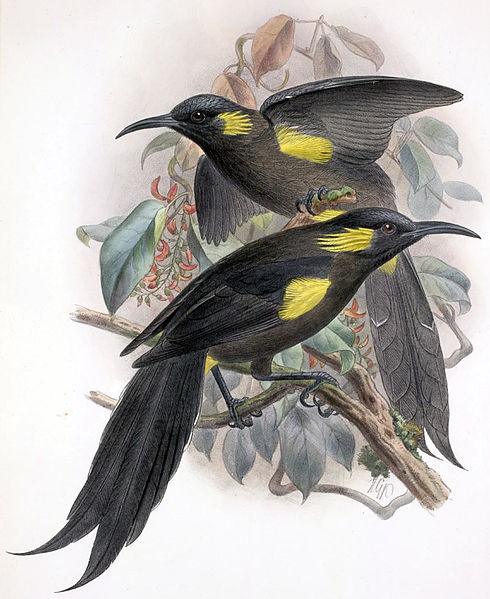Mohoidae: Hawaiian Honeyeaters †
The Hawaiian honeyeaters were a small group of long-billed, long-tailed songbirds that formerly inhabited the main Hawaiian Islands. All five species known to science went extinct in the 1800s and 1900s, making them the only recognized bird family to have gone extinct in modern times. What is believed to have been the final representative of the Hawaiian honeyeater lineage, a male Kauai O’o (Moho braccatus) on a territory deep in the Alakai Swamp, was last heard on April 29, 1987.
The Mohoidae closely resembled the Australasian honeyeaters, and its members were originally classified within that family, the Meliphagidae. To the contrary, however, genetic analyses published in 2008 (Fleischer et al.) revealed that the Hawaiian honeyeaters were in fact more closely related to several small, largely frugivorous families that comprise a peculiar avian guild: the waxwings, silky-flycatchers, Palmchat, Hylocitrea, and Hypocolius. This surprising revelation led to the posthumous recognition of the Hawaiian honeyeaters as a separate family.
References
Fleischer, R.C., H.F. James, and S.L. Olson. 2008. Convergent evolution of Hawaiian and Australo-Pacific honeyeaters from distant songbird ancestors. Current Biology 18:1927-1931.
Hume, J.P. 2017. Extinct Birds (Second Edition). Bloomsbury Publishing PLC, London.
